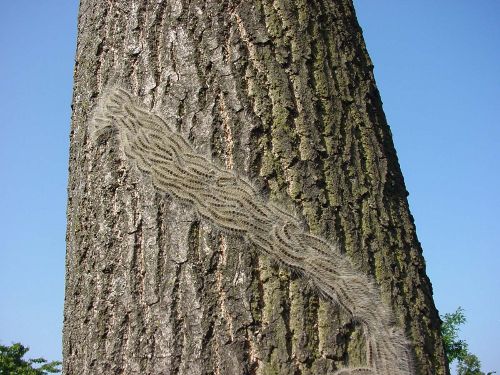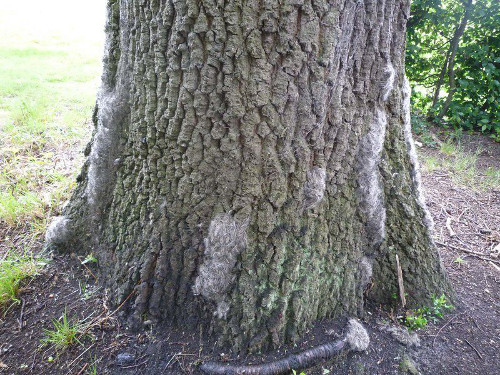
01 Jan Oak Processionary Moth Caterpillars – a noxious pest
The oak processionary moth (OPM), which hatches in July and August, was first discovered on the Common in July, 2019. The caterpillars of this little blighter, which are covered with up to 63,000 pointed defensive bristles, are a noxious pest, and are a hazard to the health of oak trees, people and animals.
Contact with the bristles can cause itching, skin rashes and, less commonly, sore throats, breathing difficulties and eye problems, and this can happen if people or animals touch the caterpillars or their nests, or if the bristles are blown into contact by the wind. The greatest risk period is May to July, but the bristles – which can be active for up to five years – can be present on old nests (which may have fallen on to the ground) and could be blown or touched at any time of year.

Identifying OPM caterpillars and their nests: The caterpillars live almost exclusively in oak trees, and move in nose-to-tail processions in oak trees or on the ground, hence their name, and build white, silken webbing trails and nests – usually dome or teardrop-shaped – on oak trunks and branches (but not among leaves), though the nests soon become discoloured. The damage which their feeding does is quite distinctive and noticeable, because the caterpillars tend to leave the leaves skeletonised, with only the main veins remaining.
So if you see any oak tree on the Common with these nests or with a strange infestation of caterpillars, and especially if you discover any fallen nests, please try to keep dogs and children away, don’t touch them yourself, and inform the Curators immediately. But first, please, CHECK that they’re in or near an oak tree – OPM caterpillars usually only attack other trees if they run out of oak leaves to eat!
The Common is not a nature reserve but it, and the adjacent Covert Way Local Nature Reserve and the open land belonging to Hadley Wood Golf Club, are havens for wildlife. Its importance in this respect is increased by its location on the urban fringe, where pressures on wildlife are considerable.


No Comments